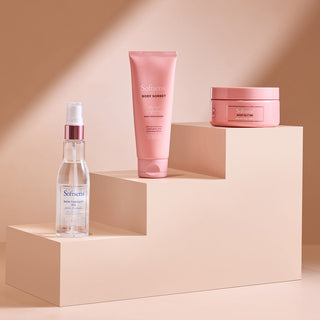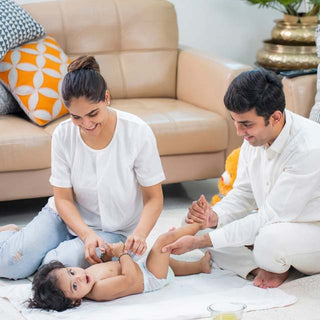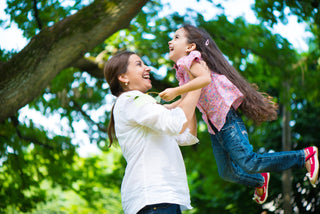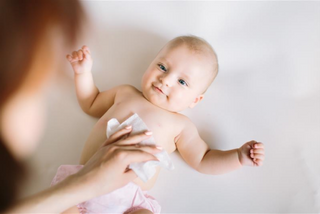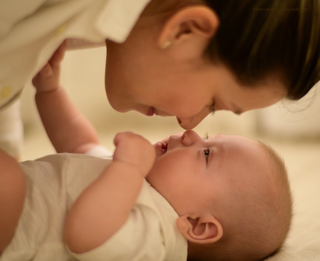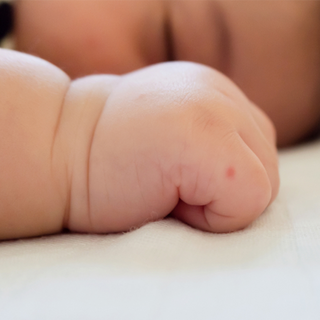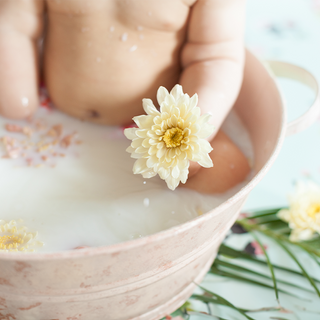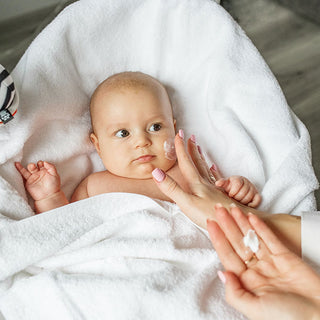
As a new parent, making sure that your baby is cozy & comfortable, especially when they’re asleep, is often one of your top priorities. And while it’s important to create a cozy sleeping environment for your baby, it is even more vital to create a “safe” sleeping space for your little one. While the thought of it is alarming, it’s important to be aware of the fact that unsafe or improper sleep practices can increase the risk of Sudden Infant Death Syndrome (SIDS) or other sleep-related accidents.
However, following safe sleeping practices for infants is quite simple and straightforward. Here are our top safe sleep practices for infants.
1. Don’t place baby to sleep in your bed
Co-sleeping, i.e. sleeping with your baby on the same bed, may seem easier, especially during those nighttime feeds, but it can be quite dangerous and can increase the risk of SIDS. An adult bed is not suitable for a newborn for a number of reasons, from its height to the type of bedding used. There is also a chance of you rolling on to baby while you both are asleep, thus blocking baby’s air passage.
For safety purposes, your baby should ideally sleep on her own, in a proper crib or bassinet with a firm mattress. That said, placing your baby’s crib/bassinet in your room is a great idea. Sleeping in the same room (not bed) has actually been shown to reduce the risk of SIDS. During nighttime feedings, it’s okay to breastfeed while sitting on your bed. However, make sure you put baby back in her own sleep area once you’re done with your feeding/changing routine.
2. Prep the crib correctly
The safest sleeping space for your baby is her own crib or bassinet. Once your crib or bassinet arrives or once you are done setting it up, do a complete check to make sure that there are no splinters, screws, sharp edges or anything that has not been fixed properly and might potentially hurt your baby.
Set up the crib/bassinet with a firm mattress that is correctly sized. It is very essential that this mattress be firm and not soft to help create a safe sleeping space. Cover the mattress properly with a soft and tight-fitted sheet. If this sheet is loose or comes off easily when grabbed, it can be potentially dangerous.
Another safe sleeping practice that lots of parents tend to overlook is making sure that your baby’s crib is empty when you lay baby down. This means no toys, blankets, pillows, bumper pillows, or anything that could accidentally cause suffocation.
Babies should never be put to sleep on chairs, sofas and other areas as this too can be quite dangerous. If your baby does fall asleep in a different area, move her to the crib or bassinet immediately.
3. Put baby to sleep lying on her back
It is recommended that babies always be put to sleep on their back, at least until they reach one year of age. This is the safest sleeping position for your little one. Do not put baby to sleep lying on the stomach or even on the side as she could roll over, which could increase the chance of possible suffocation. As your little one grows, she may start rolling over on her own or changing positions as she sleeps. If that happens, let her remain as she is unless you feel that she is in a potentially dangerous position.
Daily tummy time is great for your developing baby but must ALWAYS be supervised.
4. Dress them in safe & cozy clothing
For newborns, swaddling is a safe option and it helps your little one sleep better and longer. However, when you do swaddle, make sure the swaddle is snug but not too tight and is breathable enough to prevent baby from overheating. Click here to learn how to swaddle the correct way.
If your notice that your little one is trying to roll over, doesn’t like to be swaddled anymore or tries to wriggle out of it, you should stop swaddling your baby. Click here for a guide on when to stop swaddling and how to do it.
Depending on the weather, other safe sleepwear options are footie pajamas, onesies and sleep sacks.
5. Create a comfortable & safe atmosphere
Your baby will probably feel uncomfortable if the room is too hot or too cold. The temperature in your room should be just right for your little one.
Exposure to second-hand smoke can be harmful for baby so ensure that neither you nor anyone else smokes around the baby.
Giving your baby a pacifier (after you’ve established breastfeeding) can also be quite helpful and has been shown to reduce the risk of SIDS. It is safe for your baby to sleep with a pacifier, even if she ends up pushing it out of her mouth.
If you decide to hang a cot mobile above baby’s crib, make sure that it is at an appropriate height so that your baby is not able to easily grab or tug at it. This becomes more crucial especially as your baby grows and begins to stand up in the crib.
We hope these safe sleeping tips will help you create the best sleep environment for your little one. Share your own baby sleep practices and other experiences with us so that we can each learn from one another.




